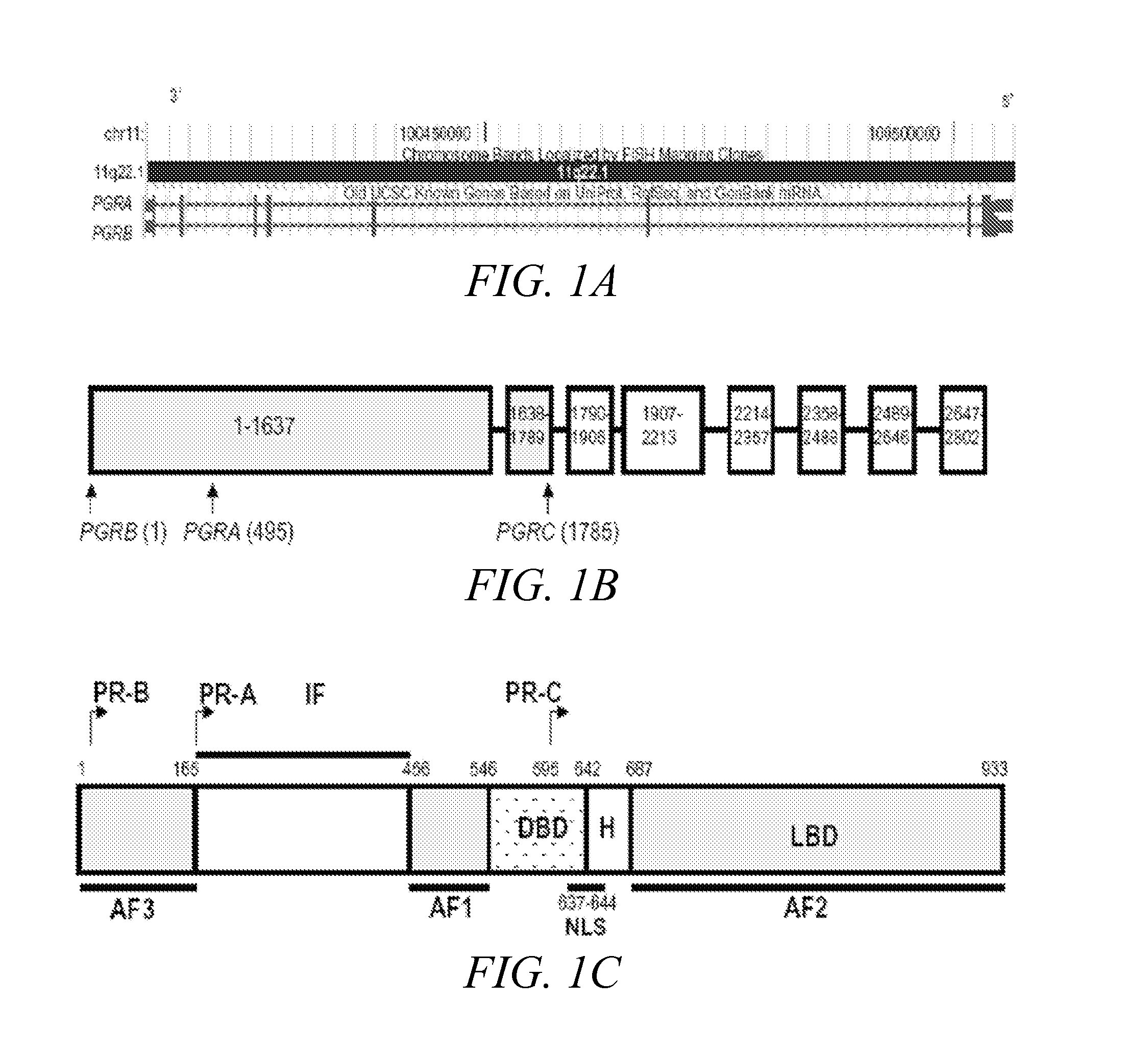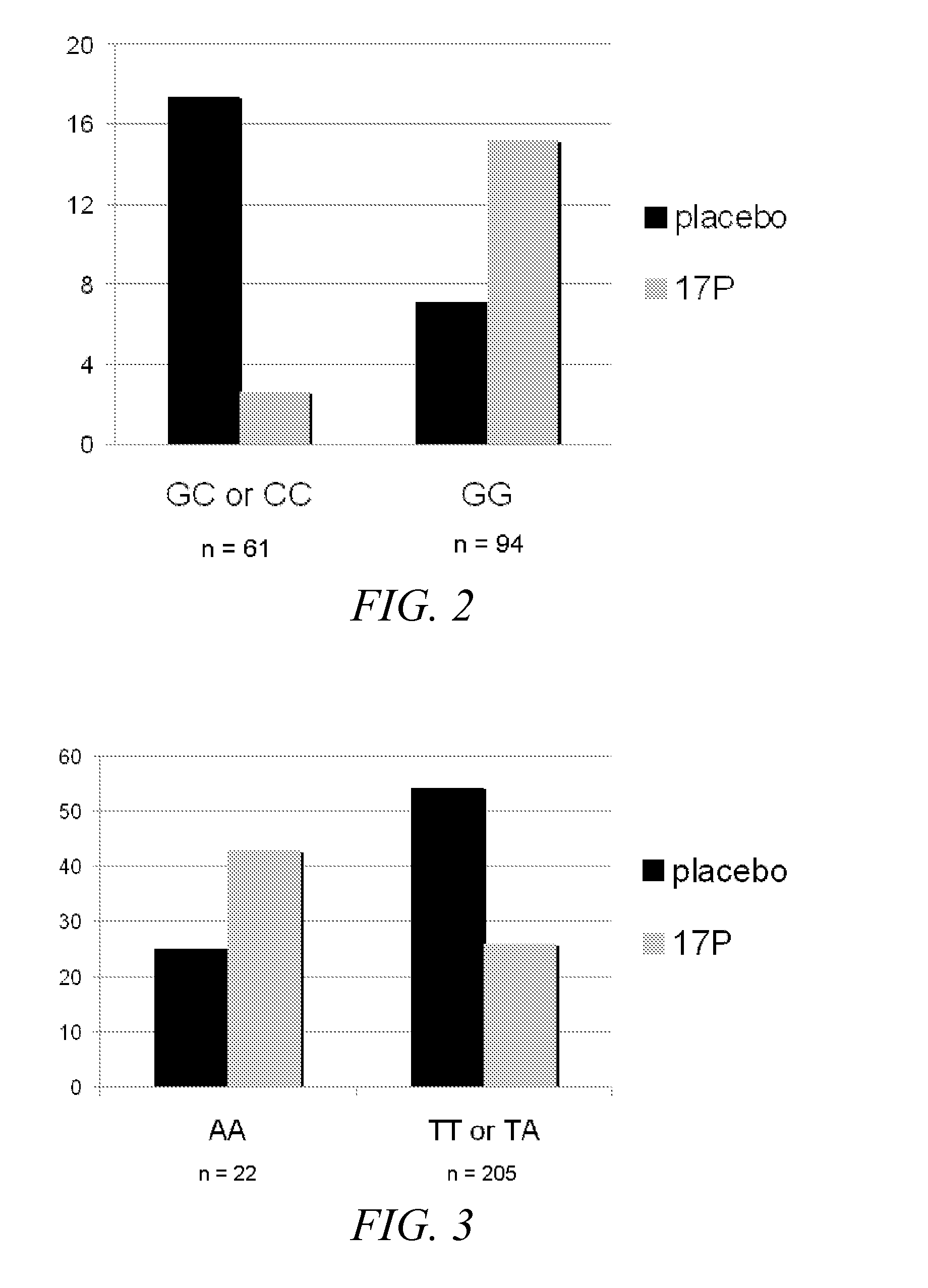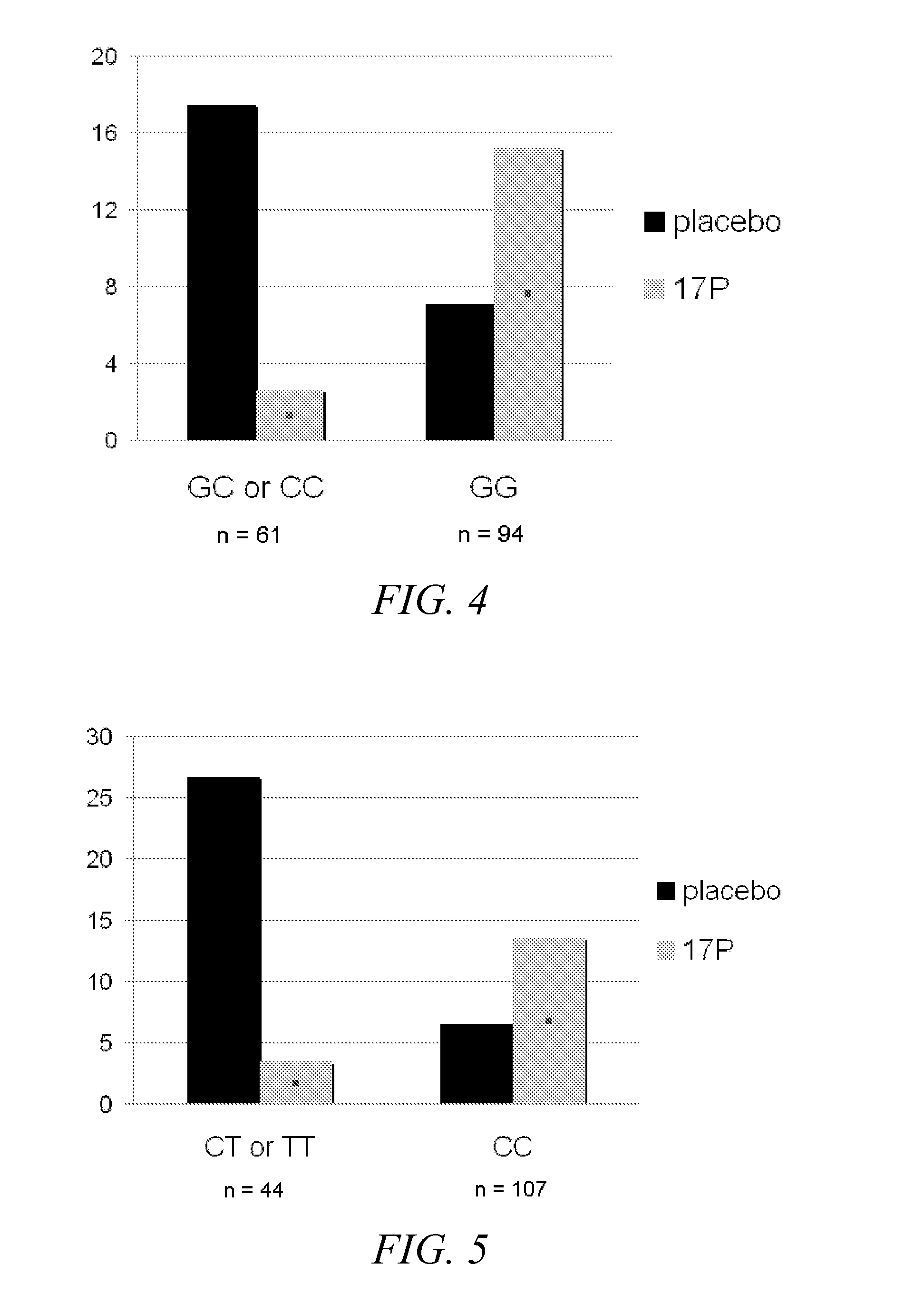Compositions and methods for diagnosing and preventing spontaneous preterm birth
- Summary
- Abstract
- Description
- Claims
- Application Information
AI Technical Summary
Benefits of technology
Problems solved by technology
Method used
Image
Examples
example 1
1. Example 1
The Relationship Between Polymorphisms in the Human Progesterone Receptor and Clinical Response to 17 Alpha-Hydroxyprogesterone Caproate for the Prevention of Recurrent Spontaneous Preterm Birth
[0242]17 alpha-hydroxyprogesterone caproate (17P) has been shown to reduce the recurrence risk of spontaneous preterm birth (SPTB). The goal of this study was to assess if women with single nucleotide polymorphisms (SNPs) in the human progesterone receptor (hPR) are more or less likely to respond to 17P for the prevention of recurrent SPTB. This study involved secondary analysis of 463 women enrolled in a multicenter, prospective, double-blind study of 17P vs. placebo for the prevention of recurrent SPTB.
[0243]Of 463 patients randomized in the original study, 459 were analyzed. Two thirds of women were randomized to 17P and one third were randomized to placebo. Of those patients who received 17P, 111, or 36%, delivered preterm less than 37 weeks, and 195, or 64%, delivered at term...
example 2
2. Example 2
Variation in the Progesterone Receptor Gene Occurs More Frequently in Women at Very High Risk for Spontaneous Preterm Birth
[0253]Progesterone is critical to pregnancy maintenance. Patients with a prior SPTB or family history of SPTB have elevated risks of SPTB. These effects can be additive and women with a high personal / family history SPTB score (explained below) are more likely to have genetic variation in the human progesterone receptor (hPR).
[0254]The Utah Population Database was queried for the presence of a personal or family history (1st or 2nd degree relative) of SPTB in a subset of women from a prospectively collected database. A personal / family history SPTB score was calculated; patients received 1 point for a positive family history of SPTB and 1 point for each SPTB. Cases were women with a personal / family history score≧2, and controls were women with only term deliveries and no family history of SPTB (score=0). DNA was extracted from stored buffy coats and ge...
example 3
3. Example 3
Family History of Preterm Birth, Progesterone Receptor Polymorphisms, and Subsequent Pregnancy Outcome
[0257]Progesterone is critical to pregnancy maintenance; it binds human progesterone receptors (hPR) and modulates gene expression. Patients with a personal or family history of SPTB have elevated risks of SPTB. Women with a documented personal / family history of SPTB can therefore be more likely to have genetic variation in the hPR.
[0258]The Utah Population Database was queried for the presence of a personal or family history (1st or 2nd degree relative) of SPTB in a subset of women from a prospectively collected database at the Univ. of Utah. This subset of women had been previously identified by delivery gestational age, and included 62 women delivering 38-41 wks gestation and 92 women with SPTB delivering<37 wks gestation. Cases were defined as women with either a personal or family history of SPTB<37 wks; controls were women without a personal or family history of SP...
PUM
| Property | Measurement | Unit |
|---|---|---|
| Length | aaaaa | aaaaa |
| Fraction | aaaaa | aaaaa |
| Fraction | aaaaa | aaaaa |
Abstract
Description
Claims
Application Information
 Login to View More
Login to View More - R&D
- Intellectual Property
- Life Sciences
- Materials
- Tech Scout
- Unparalleled Data Quality
- Higher Quality Content
- 60% Fewer Hallucinations
Browse by: Latest US Patents, China's latest patents, Technical Efficacy Thesaurus, Application Domain, Technology Topic, Popular Technical Reports.
© 2025 PatSnap. All rights reserved.Legal|Privacy policy|Modern Slavery Act Transparency Statement|Sitemap|About US| Contact US: help@patsnap.com



